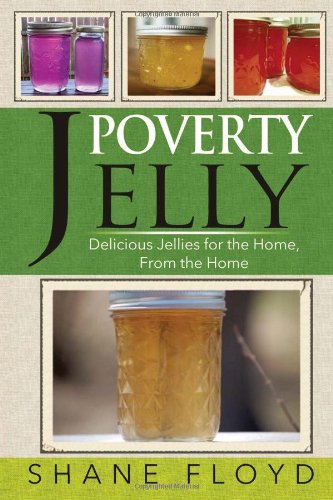 In recent years, there is a new paradigm for living standards in America. We work longer and harder, but the money made doesn’t sustain us as much as it once had. A decision must be made to either continue struggling to make ends meet or find a more sustainable way of life. Many are taking to the hard-learned lessons from the Great Depression and applying them to their own lives in order to find more practical and frugal ways to continue on.
In recent years, there is a new paradigm for living standards in America. We work longer and harder, but the money made doesn’t sustain us as much as it once had. A decision must be made to either continue struggling to make ends meet or find a more sustainable way of life. Many are taking to the hard-learned lessons from the Great Depression and applying them to their own lives in order to find more practical and frugal ways to continue on.
Jellies and jams were a staple during the Great Depression and a sweet way to liven up the foods they had available to them. On a psychological note, it may have normalized the times and boosted morale. Shane Floyd, writer for Heritage Homesteaders took this into account and decided to write a book using wild growing ingredients and good items we typically throw away and turned them into sweet, delicious jams and jellies. He believes that we should all start taking steps to break the cycle of dependency. Rather than going to the store to spend exorbitant amounts of money for jams and jellies for the year, simply use what you have growing around your home. His book, Poverty Jelly: Delicious Jellies For the Home From the Home is a testament to this belief and uses common ingredients found around homesteads and backyards.
The greatest aspect of this 40 page jelly manual is that it uses natural ingredients that people normally overlook. Many of the ingredients he uses are quietly growing in the garden or are growing wild such as, wild violets, crab apples, and honeysuckles. These wild edibles are free and make excellent jams and jellies. Why not utilize what is already growing and put it towards your future sustainment? The book also incorporates ingredients that we would normally throw away, such as watermelon rinds and even corn cobs.
While reading the book, I thought how fun it would be to make finding your jelly ingredients a family affair. Having the family go out and search for the ingredients and pick them together helps to get the children involved in the cooking process. So you are becoming more sustainable and teaching the kids about it at the same time.
I also enjoyed that the author suggests using healthy, non-gmo and other healthier alternatives that are readily available. We are finding that this country’s food sources are tainted with genetically modified produce that can cause long term health issues over time. Floyd stresses how important it is to stay away from these types of foods and stick to the naturally grown alternatives.
I loved that his recipes were each unique and not commonly found in other cookbooks. Floyd’s writing is down-to-earth and his easy to follow directions make this type of jelly-making a snap. My only critique of the book is that I wish it had more recipes. I was so impressed with the idea of making jelly from ingredients we commonly overlook that I wish the book had more. Perhaps we can persuade Shane Floyd to write another volume for Poverty Jelly.
Using the foods we have available to us resonates with many of us, and only propels us further onto the path of sustainability. Having these unique recipes to turn to will no doubt cause heads to turn when you tell them what the jams are made from. Those who are taking steps toward homesteading and self-reliant living will want this on their book shelves. Check out Poverty Jelly at Amazon.
This article was originally published at Ready Nutrition™ on July 3rd, 2014






